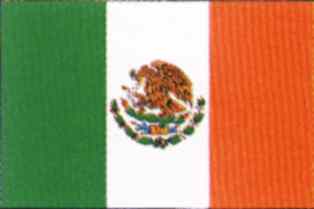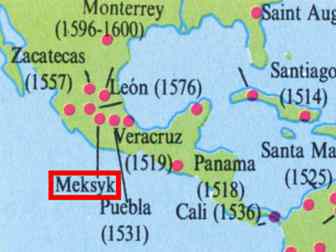Mexico - today's Tenochtitlan
Mexican flag

Mexico country

 MEKSYK (Estados Unidos Mexicanos)
MEKSYK (Estados Unidos Mexicanos)
Somewhere around 1000 BC, the first of Mexico's ancient civilizations, the Olmecs, established themselves in what are now the states of Veracruz and Tabasco. They worshipped a jaguar God, built cities, constructed massive stone head carvings, and spread throughout central and southern Mexico until their civilization mysteriously vanished around 400 BC. Though the Olmecs left behind relatively few artifacts, their influence on later cultures was profound. In their wake came the Teotihuacan, the Zapotecs and Mixtecs of Monte Alban, the Maya of Yucatan, the Toltecs, Aztecs, and dozens of smaller, citied groups. To balance the spiritual and earthly realms and appease their pantheons of gods, many of these civilizations practiced human sacrifice, a fact that often overshadows their great achievements in the realms of mathematics, astronomy, architecture, textile weaving, art, and pottery.
None of Mexico's pre-Columbian civilizations is more storied, however, than the Aztecs. Though it is arguable that other civilizations in Mexico achieved greater artistic and scientific feats, none advanced as quickly or ruled as much territory. Prior to the 15th century, the Aztecs were a marginal tribe living on the edge of Lake Texcoco, the site of present day Mexico City. By 1473, after subjugating neighboring tribes, they ruled the largest empire Mexico had ever seen. Their capital of Tenochtitlan, set in the lake, was a picturesque city of pyramids, mile-long floating roads, aquaducts, animated marketplaces, and one hundred thousand residents. Leading a highly codified government was an all-powerful emperor who exacted taxes from the conquered and distributed land to his people, especially the warriors. When the Spanish adventurer Hernan Cortez arrived in 1519, the rich city was a vision perfectly meshed to his thirst for conquest.
The Conquest of New Spain, a great and tragic history, begins in April of 1519 when a Cortes lands in Veracruz, about 200 miles from the Aztec capital. Cortes had a singular mission: defeat the Aztecs and take their gold. To do so, he had less than 400 soldiers, 16 horses, 14 pieces of artillery, 11 ships, plenty of guns and ammunition, and cajones. His first act upon landing was to burn all but one of his ships - he wanted no turning back. That he was able to defeat an empire with just a few hundred men seems nothing short of miraculous, but some of el conquistador's success, however, can be attributed to plain and simple luck.
-----
UNDER CONSTRUCTION!